Taj and tigers: the perfect 10 day Golden Triangle India itinerary
A rainbow of colours, vibrant cities, delicious food, surprising wildlife, fascinating history and culture: India is everything you’ve ever imagined and more! When I decided to visit India for the first time, I knew that my perfect itinerary would include the Taj Mahal, as well as Rajasthan’s exotic palaces and bazaars.
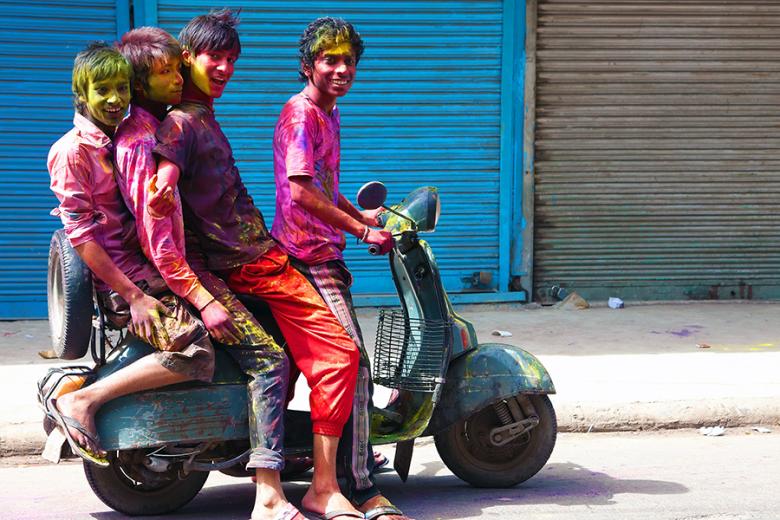
I opted for a classic Golden Triangle itinerary combining Delhi with Agra and Jaipur. To spice things up a little bit, I added a visit to Ranthambore National Park, a famous tiger reserve between Agra and Jaipur. Our route was ideal for a ten-day trip, and I would recommend it to anyone looking for a taste of India in a short amount of time.
I’ve also always wanted to experience a Hindu festival in India, and after some research, I decided to plan our trip around Holi, the Festival of Colours. Holi is celebrated in March, which is a perfect time to visit Rajasthan. It’s the end of the winter months and the beginning of summer (Holi was traditionally celebrated to welcome spring), which brings warm days (up to 33° Celsius) mixed with cool mornings and evenings.
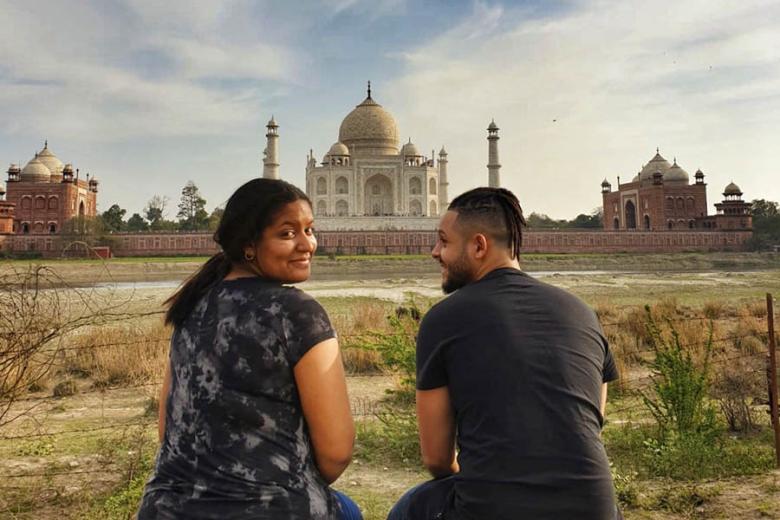
How to travel around India's Golden Triangle
It’s no secret that India can be a little overwhelming. Many first-timers describe “culture shock” after arriving in India, and I was a bit worried that I might find it daunting. This is why we chose to travel by air-conditioned private vehicle with a knowledgeable driver and local guides along the way. Throughout the trip, we stayed in 4-5* accommodation that mixed comfort with authenticity.
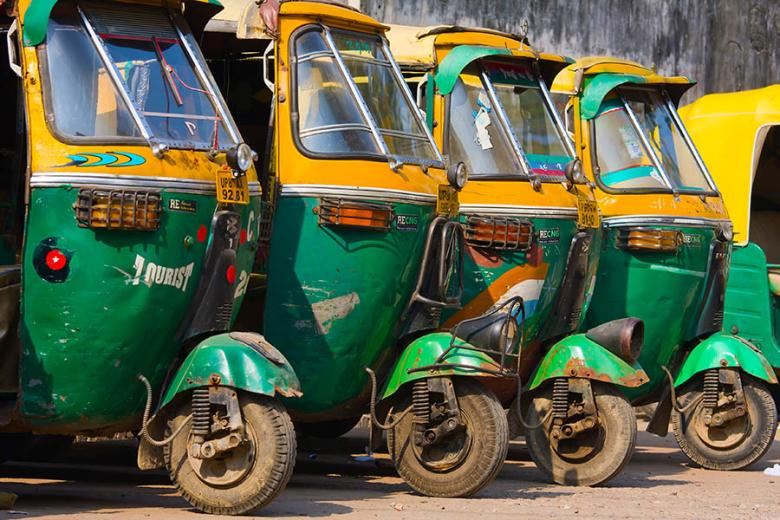
Arriving in Delhi
Our first stop was incredible Delhi. Chaotic, crazy, beautiful, mysterious and pulsating Delhi. On arrival, we were immediately drowned in constant beeping and surrounded by a sea of motorbikes and auto-rickshaws. The driving is a little reckless, but the experience is simply fantastic! Stay alert at all times -there’s always something to see out of the corner of your eye.
We stayed in modern New Delhi, which was the perfect gateway to the sights and monuments of the city. The landmarks are very spread out in Delhi, so no matter where you stay, you’ll need to take a short drive or tuk-tuk ride to reach the hotspots.

Exploring Old and New Delhi
We started our trip with a full day guided tour of Old and New Delhi, covering all of the main highlights. First, we headed to India’s largest mosque, Jama Masjid, which is a beautiful Indo-Islamic mosque built by emperor Shah Jahan (who also built the Taj Mahal) in the 17th century.
On Fridays, thousands of Muslims gather and pray in the mosque; it is a beautiful symbol of the Mughal Empire, still used to this day. Women are required to wear a full gown to enter the mosque (provided at the entrance with the tickets), and you’ll need to pay a photography fee of 300 rupees (roughly £3.50) if you wish to take photos inside.
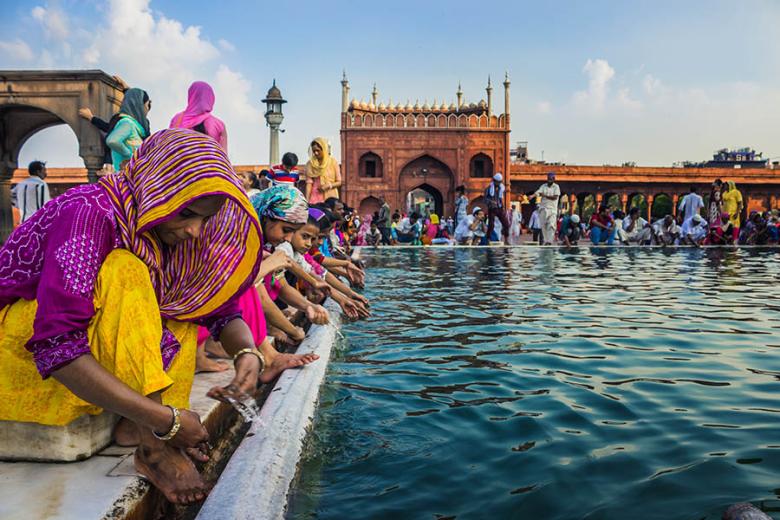
Next, we hopped on a cycle rickshaw for a whirlwind ride through Chandni Chowk bazaar in Old Delhi. What an experience! It was one of the highlights of our trip. The journey took us through the narrow lanes and tiny alleys of Chandni Chowk, the iconic market of Old Delhi. Along the way, we passed everything from fruit and vegetable stallholders to electronics, jewellery and clothing shops. On the road, we weaved between motorbikes, horse-drawn carriages, rickshaws and pedestrians. It was about the senses and sights – a truly exhilarating experience.

After the tour, we had lunch at the Gulati Restaurant in Pandara Market, which is famous amongst the locals. If you’re looking for North Indian cuisine in a welcoming atmosphere, this is the place to be! We had the multiple award-winning Butter Chicken, and it did not disappoint. Accompanied by a cheese naan, boiled rice and pickled onion and mint raita, it was the most delicious lunch I’ve had in a long time!

For the rest of the day, we visited Red Fort, Gandhi’s memorial, Humayun’s Tomb and Qutub Minar. If I had to pick only one of these sights to visit, it would Qutub Minar, an ancient ruin with a red sandstone tower in the centre. A mix of Hindu and Muslim influences, it’s impressive and atmospheric.

Agra
The next stop on our journey was Agra, which took roughly 3.5 hours from Delhi by road. Agra is home to the breath-taking Taj Mahal, the Seventh Wonder of the world. The Taj Mahal is a colossal mausoleum built on the bank of the Yamuna River. We’ve all seen it in photos, but to experience it in real life is on another level. It’s simply spellbinding.
Our first encounter with the Taj Mahal was via Mehtab Bagh, the Moonlight Garden, a park behind the complex with views of the Taj Mahal across the Yamuna River. It’s a very peaceful area and a great place to escape the crowds. The river was low during our visit, but at other times, the reflection of the Taj Mahal in the Yamuna is a sight to treasure.
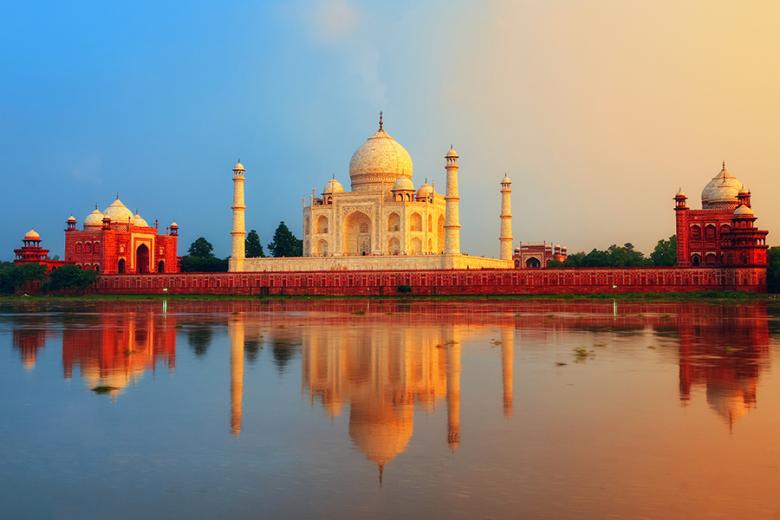
Sunrise at the Taj Mahal
We were up before daybreak the next day for the main event to catch a beautiful sunrise at the Taj Mahal and avoid the crowds. The dawn was indeed beautiful, but we most definitely didn’t manage to avoid the crowds! We thought we would be amongst only a few people waiting at the entrance before 6am - we were very wrong. EVERYONE wants to visit the Taj Mahal at dawn, so be prepared for long queues and endless photobombs! Don’t worry though; we still managed to get our perfect Taj Mahal photo – you will too.
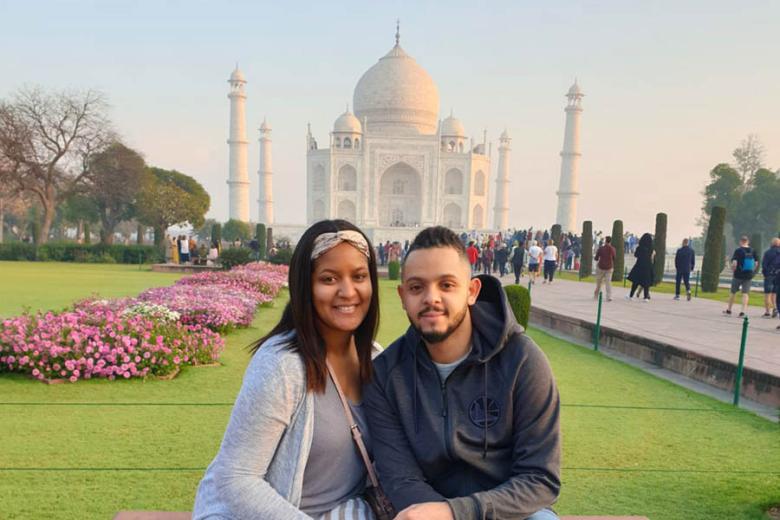
The Taj Mahal is an awe-inspiring construction, built by Emperor Shah Jahan in memory of his third and favourite wife, Mumtaz Mahal. The marble building is pristine, the main entrance is carved with Koranic verses, and the walls are inlaid with semi-precious stones. The whole complex is a masterpiece, and while the details are phenomenal, the story makes it even more magical.
The actual tombs are pretty small compared to the whole mausoleum, and they’re the only non-symmetrical items of the complex (Shah Jahan’s tomb was added at a later date). We spent almost three hours wandering through the complex and then headed back to our hotel for breakfast.
In the evening, we went to Mohabbat The Taj Show, which recreates the love story of Shah Jahan and Mumtaz Mahal with beautiful dancers and musical pieces. The show is performed in Hindi (with audio translation), and it’s a great thing to do in Agra. I would highly recommend it. Also, while you’re in Agra, don’t miss Agra Fort and, if you have any extra time, visit Fatehpur Sikri.
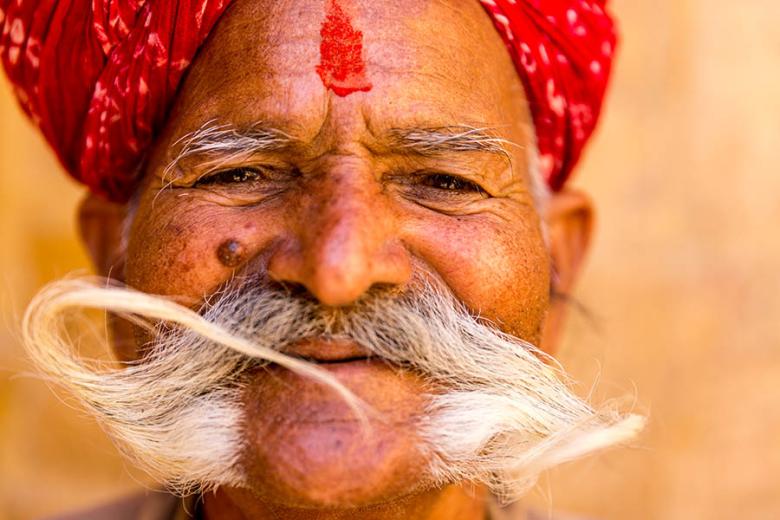
Taking the train to Ranthambore
Our next adventure was a train journey from Bharatpur to Sawai Madhopur, the jumping off point for Ranthambore National Park. Bharatpur is a two-hour drive from Agra, and we split the trip with a lunch break at Laxmi Vilas Palace before hopping on the train for Ranthambore. Laxmi Vilas is a beautiful heritage palace with sparkling fountains and regal décor. The buffet lunch was varied and delicious, so it’s worth a stop.

The train journey wasn’t quite as I had expected. Before our trip, I had read everywhere that travelling by train in India is a must-do, so I was very curious and excited to be a part of the local Indian life. The train was perfectly fine, and I loved watching the changing landscape, but looking back, I would have arranged this differently.
My personal disappointment lay in the fact that we had reserved seats in the A/C first class carriage, which felt exclusively reserved for European tourists. I felt very uncomfortable walking past the locals to get to the most expensive part of the train, and I would have swapped our seats for a lower category in a heartbeat. It all depends on your own needs and priorities: the A/C first class carriage offers comfort and peace of mind, while the lower categories guarantee atmosphere and interaction with locals.

On safari in Ranthambore National Park
We stayed at Ranthambore Heritage Haveli, which was one of our favourite hotels on our trip. The hotel is a beautiful example of Rajasthani architecture, the rooms are very spacious, the staff are lovely, and the food is delicious. I suggest opting for full-board if you plan on staying around Ranthambore, giving you the chance to relax completely at your hotel between safari experiences.
We went on two safaris in Ranthambore - one in the morning and one in the late afternoon. It gets cold in the morning, and the jeeps drive at full speed to reach the National Park, so don’t forget to bring a warm jumper and long trousers. Our hotel was very well equipped though, and we were given one thick blanket for the safaris, along with water bottles and binoculars.

Our safari experience was amazing. We drove through the forest and scrubland for around four hours, looking out for tigers and other wildlife on the way. As a general rule with safaris, the smaller the jeep, the better for spotting wildlife. We went out on a six-seater Open Jeep, and we could see everything comfortably.
Tigers are notoriously tricky to see and didn’t manage to spot one during our stay, but we did see a sloth bear, as well as plenty of other wildlife. Overall, we had a wonderful time and missing out on a tiger gives us the perfect excuse to go back!

Jaipur
Leaving Ranthambore behind, we set off to our final destination on the trip: Jaipur. We stayed in a beautiful heritage hotel called Shahpura House, and I can’t recommend it enough. We were treated like royalty as soon as we stepped inside the property and felt immediately at home. There are royal family portraits on every wall as well as intricate arched doorways, colourful frescoes, shimmering ceilings and antique furniture. It is the perfect setting for a Rajasthani escape in the Pink City.

Celebrating Holi in Jaipur
We arrived in Jaipur just in time for the Holi celebrations. The entire city was busy preparing for the holiday, and people were selling coloured powder – gulal – on almost every street. Holi, also known as The Festival of Colours, is widely celebrated across India and has been observed for centuries. People of all ages come together to play havoc with colours, and I felt very privileged to be a part of it all.

We spent the afternoon visiting Jaipur and the Old City, including Hawa Mahal and the City Palace. In the evening we experienced the first ritual celebration of Holi, Holika Dahan. Each family or neighbourhood collect wood and gather around it after sunset, to set it on fire for the burning of Holika. The ceremony is fun and lively, with music and dancing.
We spent Holi in the town of Shahpura, about an hour drive from Jaipur, at Shahpura Haveli. The hotel had organised a traditional Holi celebration with lunch for all their guests. The experience was amazing. Each guest was given a white Kurta, and we spent the morning throwing “colours” at each other’s faces and clothes while dancing on live traditional music. Some Indian kids joined us, and we had a great time, followed by a delicious Indian lunch.

The experience of a lifetime in just ten days
Holi provided an incredible end to our fantastic 10-day India holiday. The trip was an intense, colourful and humbling journey of discovery, bursting with beauty. In less than two weeks, we felt like we had seen and experienced so much, and yet it was only our first taste of India. The country is so vast and holds so much mystery that no matter how often you go back to it, you’ll always discover something new.
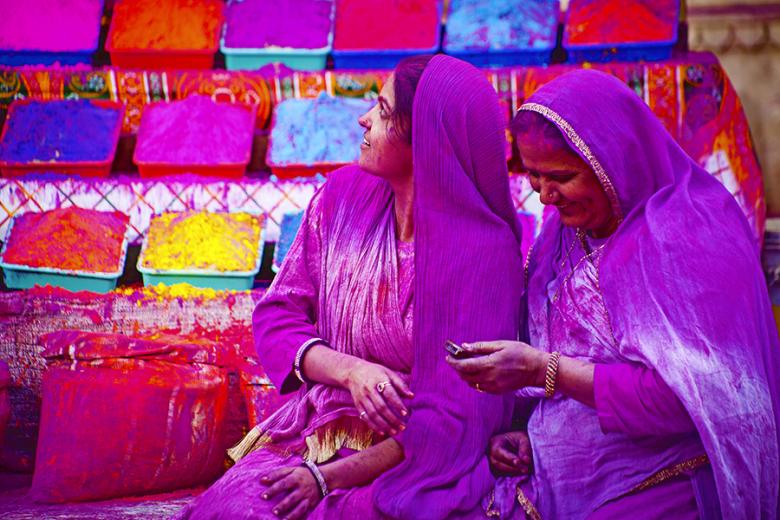
Tempted to plan your own Golden Triangle India itinerary?
This trip is loosely based on our tailor-made Dreams of the Taj with Tigers itinerary, so if you would like to do something similar in India, give us a call or request a quote. We are experts in planning tailor-made holidays and multi-stop flights all over the world, so we can work together with you until we’ve created your perfect trip.
















